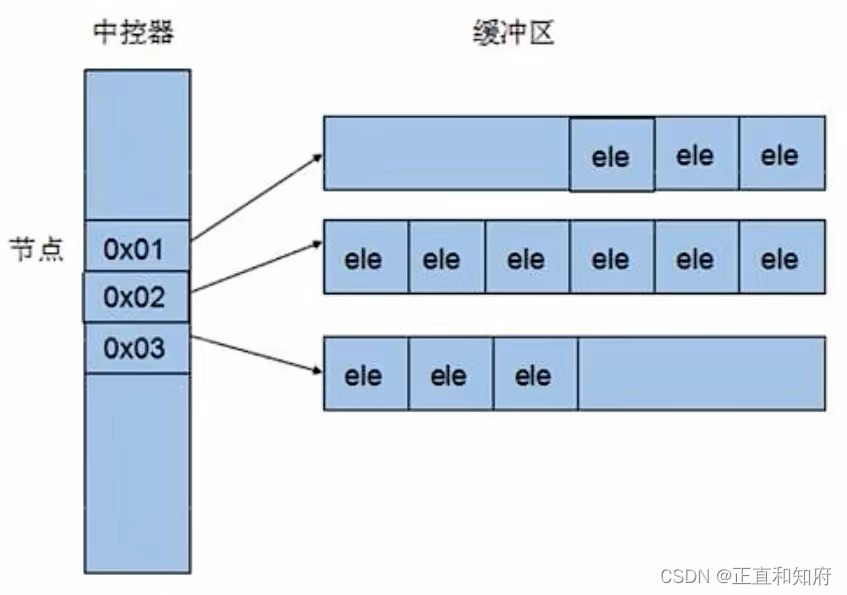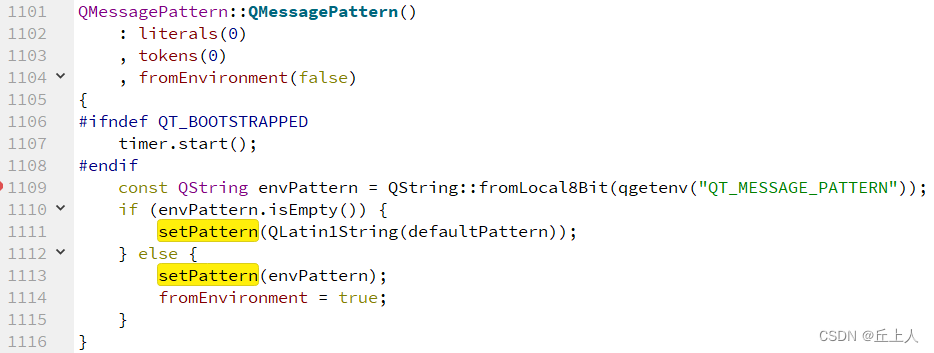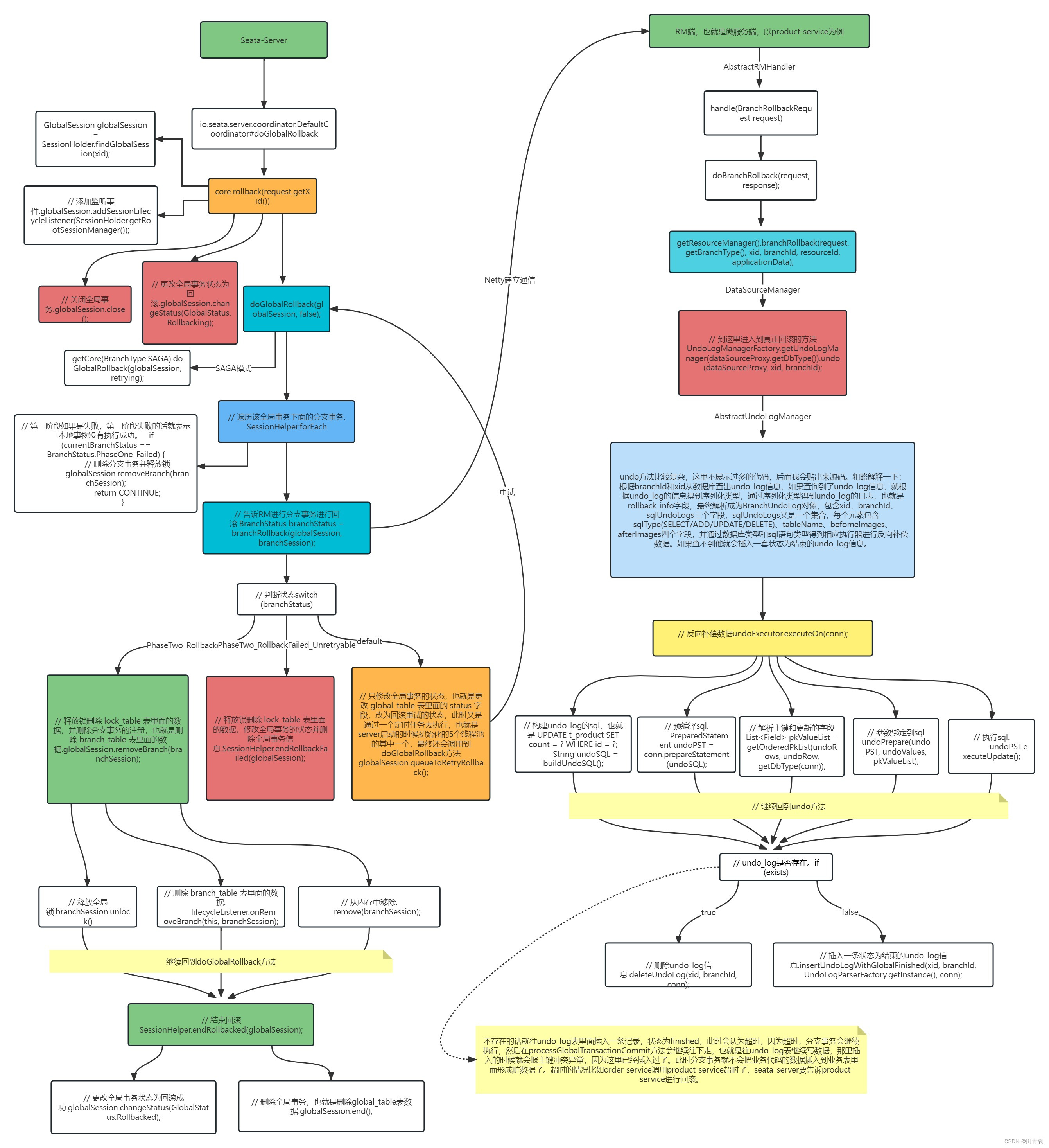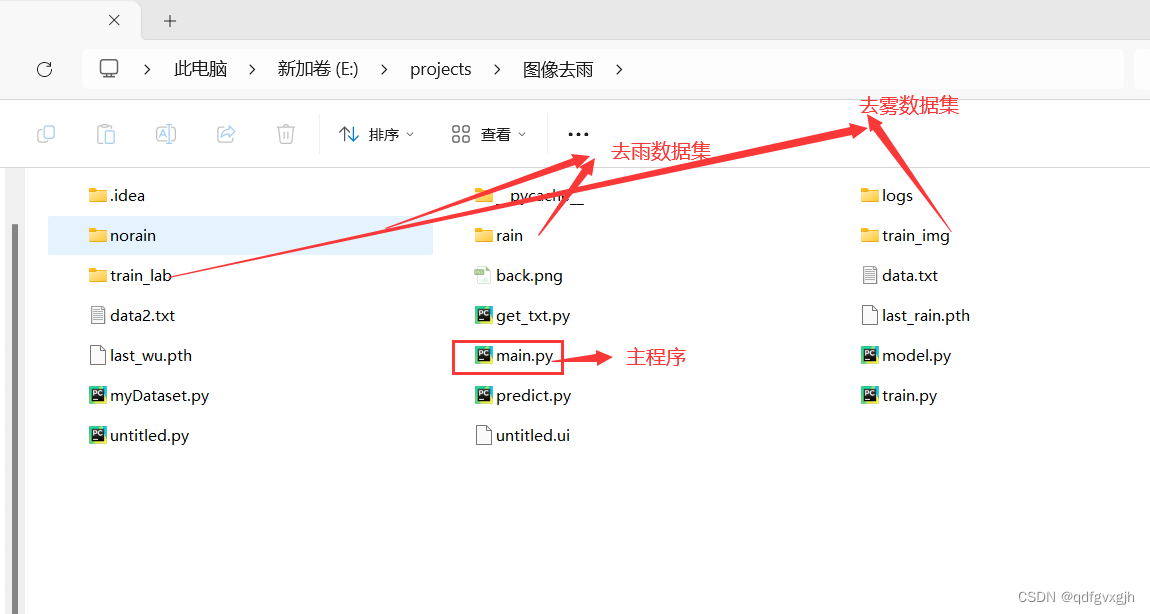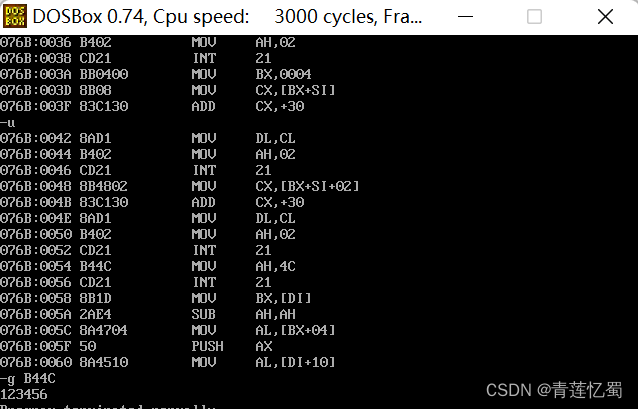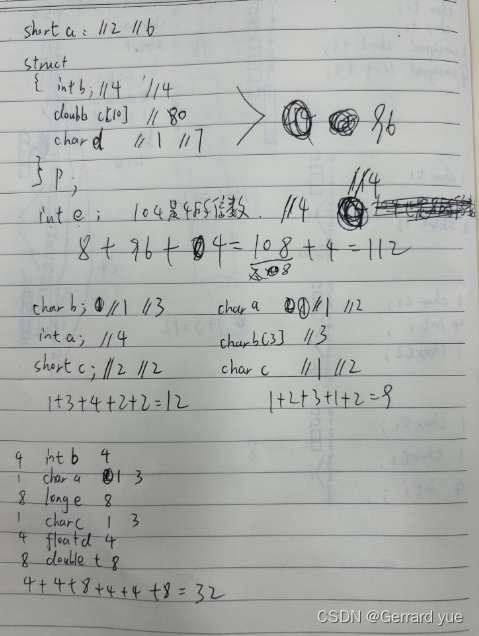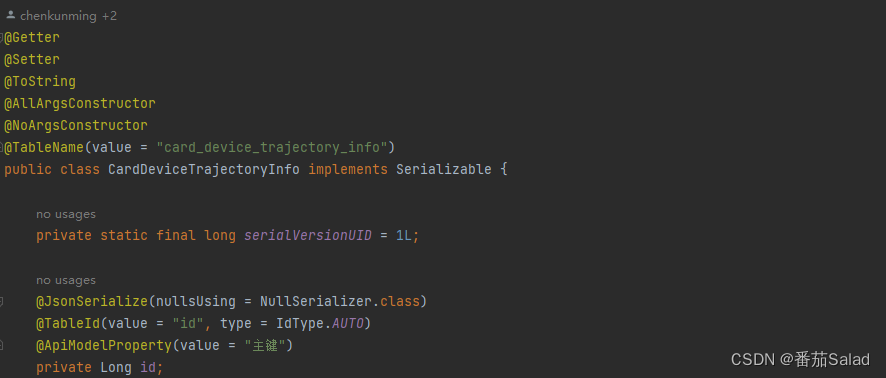前言
该篇论文对算法的描述是比较详细的,在Unity中复现其功能。我这边的效果是这样的。

不尽人意
正文开始
Sketch-Based Garment Design with Quad Meshes
基于草图的服装设计与四边形网格
2020/02/13 Jackdos整理翻译
Abstract摘要
Garment creation continues to be the most tedious part of the virtual clothing process. In this paper, we present an easy to use sketch-based cloth modeling approach.
服装创作仍然是虚拟服装制作过程中最繁琐的部分。在这篇论文中,我们提出了一种简单易用的基于草图的布料建模方法。
Contours can be easily sketched on a mannequin to generate quad meshes to represent pieces of cloth already fit and draped.
轮廓可以很容易地画在人体模型上,以产生四边形网格,代表已经适合和覆盖的布块。
Typically, the clothing process depends highly on the meshing scheme that has to infer its geometry from the input boundary.
通常,服装加工过程高度依赖于网格划分方案,而网格划分方案必须从输入边界推断其几何形状。
Our quad meshing scheme is based on discrete Coons patches but with arbitrary boundary input.
我们的四元网格划分方案是基于离散的库子补片,但具有任意的边界输入。
We also apply the permanence principle to our topological solution to allow more control over the influence of the input boundary polyline on the interior output polygonal mesh.
我们还将永久性原理应用到我们的拓扑解决方案中,以便更好地控制输入边界折线对内部输出多边形网格的影响。
This facilitates the creation of folds that are strongest in curvature at the boundary and which diminish towards the interior.
这有助于在边界处产生曲率最强的褶皱,并向内部逐渐减小。
The generated garments can then be easily animated in a simulation system based on Finite Elements, using a rediscretization of the generated mesh and a reconstructed metric of the cloth surface.
然后,通过对生成的网格的重新离散化和布表面的重构度量,可以在基于有限元的仿真系统中轻松地对生成的服装进行动画处理。
Key words: garment design, sketch-based modeling, quad meshing, extra-ordinary vertices, discrete Coons, permanence patches, physical simulation, Finite Elements
关键词:服装设计,基于草图的建模,四元网格,超常顶点,离散库恩,永久性斑块,物理仿真,有限元
1.Introduction介绍
Modeling cloth without having to design pieces of garment and their seaming associations is a major attraction in cloth modeling and animation. 不需要设计服装的模型布和它们的缝制组合是服装模型和动画的一个主要吸引力。
In this paper, we present a sketch-based approach for modeling cloth described by a network of polylines input by the user from different 2D views in a virtual 3D environment.
在本文中,我们提出了一种基于草图的布料建模方法,该方法由用户在虚拟三维环境中从不同的2D视图输入的折线网络来描述。
We start by setting a 3D mannequin and some auxiliary planes,to sketch the outlines of the cloth.
我们首先设置一个三维人体模型和一些辅助平面,来勾画出布料的轮廓。
Out of a network of boundary polylines, we construct high quality quad meshes representing cloth pieces.
在边界折线网络的基础上,构造出高质量的代表布片的四网格。
Every piece of the generated cloth is then associated to an underlying body part or a corresponding sub-mesh.
然后,生成的每一块布都与底层的身体部分或相应的子网格相关联。
The contribution of our work lies in the design of quad meshes from sketched contours of the desired garments.
我们的工作的贡献在于根据期望服装的草图所获得的四边形网格的设计。
The literature presents us with criteria to compare the results of various meshing schemes.
文献为我们提供了比较各种网格划分方案结果的标准。
The authors in [1] quantified this criteria by the distortion of the mesh 3 and limited their quad meshing scheme to instances of the problem where the minimum of this distortion is attainable.
作者通过网格的变形来量化这一标准,并将其四元网格划分方案限制在能达到最小变形的情况下。
The distortion of a mesh is the sum of distortion on all the verticesof the mesh. The distortion on a vertex is, in turn, the deviation ofits valence from the regular setting (4 for interior, 3 for boundary,and 2 for corner vertices).
网格的变形是网格上所有顶点的变形之和。一个顶点的变形依次是它的原子价与常规设置的偏差(4为内部,3为边界,2为角顶点)。
Their work is mainly concerned with finding a topological solution – the vertices and their connectivity – where the geometry of the resulting mesh is an assembly of rectangular Discrete Coons Patches [7].
他们的工作主要是寻找一个拓扑解决方案--顶点和它们的连接性--其中得到的网格的几何形状是一个装配的矩形离散库恩补丁[7]。
In this paper, we extend their work to fill a larger variety of n-sided regions by introducing additional dislocations and allowing an increase in the distortion but with the least possible amount.
在这篇论文中,我们扩展了他们的工作,通过引入额外的位错和允许以最小的可能量增加失真来填充更多的n边区域。
Moreover, we generalized the permanence principle [7] to quad mesh a region with an arbitrary topological input to allow more control over the weight of the boundary vertices propagated towards the interior of the mesh.
此外,我们推广了永久性原则[7]四网格区域与任意拓扑输入,以允许更多的控制权的边界顶点传播到网格内部。
For the purpose of visualization, 为了达到可视化的目的
we implement a fast Finite-Element simulation system 我们实现了一个快速的有限元仿真系统
which combines the ability of representing accurately the nonlinear anisotropic behavior of cloth materials
该系统结合了准确描述织物非线性各向异性行为的能力
along a particle-system representation allowing the use of efficient numerical integration methods
和一个允许使用有效的数值积分方法的粒子系统来表示
along the possibility of handling collisions and geometrical constraints efficiently [20].
以及有效处理碰撞和几何约束的可能性。
Thanks to a dedicated collision processing, the cloth respond appropriately to the motion of the body, which can set to various poses or perform various animations.
由于专门的碰撞处理,布料适当地响应身体的运动,可以设置各种姿势或执行各种动画。
The remainder of this paper is organized as follows. 本文的其余部分组织如下。
Section 2 gives an overview of related work. 第2节概述了相关工作。
The cloth modeling application along with its three main phases, namely sketching, meshing, and refitting, are detailed out in section 3.
第3节详细介绍了织物造型的应用及其三个主要阶段:素描、网格化和改装。
We describe the mechanical simulation system in Section 4. 在第4节中描述了机械仿真系统
Section 5 outlines the conclusion and future work. 第5节概述了结论和未来的工作。
2. Related Work 相关工作
The dominating method that is adopted in virtual clothing is the 2D pattern construction and draping of the constituting pieces of cloth.
虚拟服装中采用的主要方法是对构成服装的布片进行二维的图案构造和立体裁剪。
However, sketch-based cloth modeling has received some attention. 然而,基于草图的布料建模也受到了一些关注。
Turquin et al. [18] developed a sketch-based interface that would let users construct 3D virtual garments on a character model.
Turquin [18]等人开发了一种基于草图的界面,用户可以在人物模型上构建3D虚拟服装。
Their system computes distance-to-the-body for the silhouette lines and point-to-body distances for the borderlines.
他们的系统计算轮廓线与身体的距离,边界线计算点与身体的距离。
It then propagates this distance information in 2D to find desired pointto-body distances, which it uses to determine the garment’s 3D position.
然后,它在2D中传播这个距离信息,以找到所需的点到体的距离,并使用它来确定服装的3D位置。
Folds are incorporated by strokes that mark the presence of either ridges or valleys. 褶皱是由标记山脊或山谷的笔画组成的。
Wang et al. [6] model a 3D garment around a 3D human model by 2D sketches input.
Wang[6]等人通过二维草图输入,在三维人体模型周围建立三维服装模型。
A feature template for creating a customized 3D garment is defined according to the features on a human model.
根据人体模型上的特征定义了用于创建定制3D服装的特征模板。
Then the profiles of the 3D garment are specified through 2D sketches. 然后通过二维草图确定服装的三维外形。
The smooth mesh surface interpolating the specified profiles is constructed by a modified variational subdivision scheme.
用修正的变分法构造了对指定剖面进行插值的光滑网格曲面。
In a somewhat different context, Han et al. [8] computed the 3D shape of cloth from a single image.
在一个稍微不同的环境中,Han等人通过一张图片计算出了布料的三维形状。
They present an algorithm that finds the shading primitives on a cloth image and simultaneously recovers their 3D shape by fitting to the 3D fold primitives obtained through photometric stereo.
他们提出了一种算法,找到布料图像上的阴影单元,同时通过拟合通过光度立体视觉得到的三维折叠单元来恢复其三维形状。
Chen et al. [5] reconstruct generic images by using an attributed graph representation for clothes with a dictionary of image primitives where each stroke may correspond to folds, sewing lines, occluding boundaries, and shape outlines.
Chen等人使用一个原始图像字典,通过衣服的属性图表示来重建一般图像,其中每个笔画可能对应于折叠、缝纫线、遮挡边界和形状轮廓。
Our approach reduces the problem to finding a good meshing algorithm to construct cloth pieces from an input net of polylines entered by the user as outlined in.
我们的方法将问题简化为找到一个好的网格划分算法,从用户输入的折线所组成的输入网络中构造布片[22]。
In general, there are four approaches towards a solution: advancing front, node placement, parametric curves, and the topological approach.
一般来说,有四种方法来解决这个问题:前沿推进法、节点布置法、参数曲线法和拓扑法。
In the advancing front technique [3,21,15,16], a set of fronts are defined consisting of the edges at the boundary of the domain.
在推进前沿技术[3,21,15,16]中,一组前沿是由定义域边界的边组成的。
Quads are systematically combined at the front, advancing towards the interior of the area.
四边形被系统地结合在前方,向区域内部推进。
The node placement process [17,14,10] is made of two stages the positions of the nodes are computed first and their connectivity is decided next.
节点放置过程[17,14,10]由两个阶段组成,首先计算节点的位置,然后确定它们的连通性。
The third approach uses subdivision surfaces and differs in the nature of data input.
第三种方法使用细分曲面,并且在数据输入的性质上有所不同。
Given an n–sided region bounded by n parametric curves and a user defined vertex G,
给定以n条参数曲线为边界的n边区域和一个用户定义的顶点G,
connect G with the middle parameter point on each side constructing an initial quad-based control net [2,19,4,9,11].
将G与每边的中间参数点连接,构造一个初始的基于四次元的控制网[2,19,4,9,11]。
The topological approach [1,12] aims at generating the quad mesh topology regardless of the geometric conditions at the boundary.
拓扑方法[1,12]的目的是在不考虑边界几何条件的情况下生成四网格拓扑。
In an afterward phase, the locations of the vertices are determined.
在随后的阶段,顶点的位置被确定。
a) Boundary lines sketched on the mannequin. 在人体模型上画的边界线。
b) The generated quad mesh. 生成的四边形网格。
c) The garments refit to the underlying skin. 衣服重新贴合皮下皮肤。
d) The garment comprised of parts combined using a mirror operation.使用镜像操作组合服装。
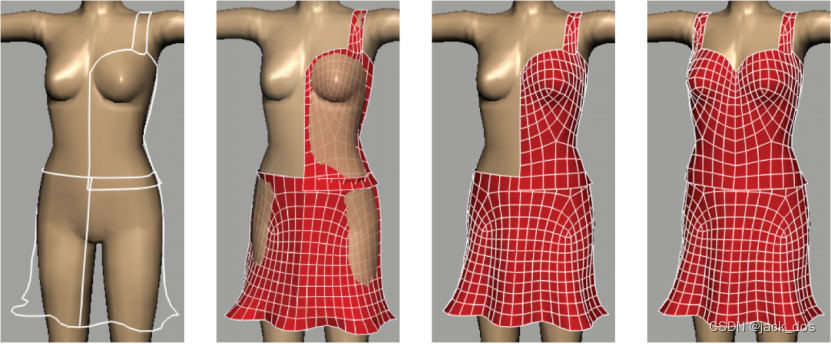
Fig. 1. Cloth generation from boundary lines sketched on a mannequin.
图1所示。由人体模型的轮廓线产生的布料。
3. The Sketch-Based Cloth Modeling Approach 基于草图的布料建模方法
The sketch-based cloth modeling approach allows cloth design in a triple-phase process (see Fig. 1 and Fig. 12).
基于草图的布料建模方法可以将布料设计分为三个阶段(如图1和图12所示)。
First, the user draws the nets of polylines that represent the descriptive outline of the cloth (Fig. 1(a)).
首先,用户绘制折线网,表示织物的描述性轮廓(图1(a))。
Then, the closed regions in the net of polylines are filled with quad meshes (Fig. 1(b)).
然后,折线网的封闭区域填充四元网格(图1(b))。
In the last phase cloth-body associations are established so that every piece of cloth has a corresponding underlying body part (Fig. 1(c)).
在最后一个阶段,布-体关联被建立,这样每一块布都有一个相应的底层体部(图1(c))。
This is done either automatically by computing the enclosed submesh or by manually selecting the polygonal faces comprising the submesh of the mannequin when the cloth is loose.
这可以通过计算封闭的子网格自动完成,也可以通过手工选择包含模型子网格的多边形面来完成。
We use these associations to resolve cloth-body interpenetration as well as for collision detection and handling at animation time.
我们使用这些关联来解决布-体的相互渗透,以及在动画时的碰撞检测和处理。
Simple operations such as mirror and join can be applied later on the resulting mesh (Fig. 1(d)).
简单的操作,如镜像和连接,稍后可以应用在得到的网格上(图1(d))。
3.1. Sketching in a 3D Environment在3D环境中的素描
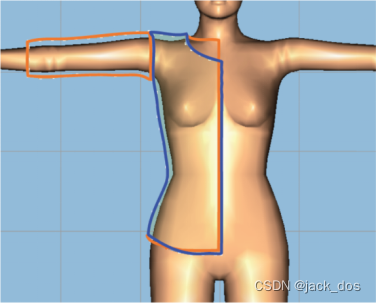
Fig. 2. The outlines of a jacket sketched in the front and back view.
图2所示。在前、后视图上勾画出的夹克的轮廓。
The sketching environment is a multi-view (orthographic and perspective) paneled window.
素描环境是一个多视图(正投影和透视)镶板窗口。
The mannequin –aligned along the y-axis in a standing position– is the basic element in the scene.
人体模型——以站立的姿势沿着y轴排列——是场景中的基本元素。
When the user draws in the front view, the input lines either lie in the xy plane or on the mesh of the model with a user defined offset (see Fig. 2).
当用户在前视图中绘制时,输入线要么位于xy平面上,要么位于用户定义偏移量的模型网格上(见图2)。
It is possible that the system planes (xy, xz, and yz) may not be enough to include all parts of the input outlines.
系统平面(xy、xz和yz)可能不足以包含输入轮廓的所有部分。

Fig. 3. The virtual mode that helps draw the loose parts that arenot directly attached to the body.图3所示。虚拟模式,帮助绘制松散的部分,而不是直接连接到身体。
For example, consider the lower part of the skirt that may be described by a closed contour drawn around the knees and lying in a plane parallel to the xz plane (see Fig. 3). 例如,考虑的下部裙可能被一个封闭的轮廓画在膝盖和躺在一个平面平行于xz平面(见图3)。
In order to draw the loose parts that are not directly connected to the body, 为了画出松散部分不直接连接到身体,
the user may switch to a temporary drawing mode用户可以切换到一个临时画模式,
where the sketches are rotated to lie in the plane perpendicular to the current viewing plane and passing through the last point drawn in the normal mode. 在这个模式中,草图的旋转依赖垂直于当前观看平面的平面,通过最后一点在正常模式。
As the user creates the outlines of the pieces of cloth, different tools such as cut and add are needed. Figs. 4, 5, and 6 demonstrate the process.
当用户创建布片的轮廓时,需要不同的工具,如剪切和添加。图4、图5和图6展示了这个过程。
3.2. The Quad Meshing Scheme四边形网格方案
The quad meshing algorithm in [1] is based on the criteria of the existence of at least one n–valent dislocation (an extraordinary vertex or a non–quadrilateral facet) in an n– sided region.
[1]中的四元网格划分算法是基于n边区域中至少存在一个n价位错(一个特殊的顶点或一个非四边形的面)的准则。
Starting from this criteria, a partitioning to rectangular regions is inferred from the flow of lines around and through this dislocation (see Fig. 7).
从这个标准开始,矩形区域的分区是推断的流动线条,通过位错(见图7)。
Thus, given the lengths li of the sides of the region, the topological distances di , that define the dimensions of the rectangular subregions, are computed using the designed formulae.
因此,给定区域边的长度li,定义矩形子区域尺寸的拓扑距离di,将使用设计的公式计算得出。
However, there are instances where the topology of the boundary lines does not permit the construction of strictly rectangular regions.
然而,在某些情况下,边界线的拓扑结构不允许构造严格的矩形区域。
In what follows, we present a simple method to deal with such cases. 在接下来的文章中,我们将介绍一种处理这种情况的简单方法。
We also extend what was previously proposed in the context of discrete Coons to the permanence patches [7].
我们还将之前在离散库子环境中提出的方法扩展到永久性补丁[7]。
3.2.1. Quad Meshes with Higher Distortion具有更高的变形的四边形网格
For certain topological configurations, the system that computes the distances di(1≤i≤n) from the dislocation to the sides yields one or more negative values.对于某些拓扑结构,计算位错到边的di(1≤i≤n)的系统得到一个或多个负值。
The basic idea of our algorithm (see Fig. 9) is to isolate sides that are relatively large in 4-sided distorted sub-regions.
我们算法的基本思想(见图9)是在4边畸变子区域中分离出相对较大的边。
All cases of such regions are guaranteed to be filled by a quad mesh in [1] with maximal total distortion equal to 4.
在[1]中,所有这些区域都保证被一个最大总失真为4的四元网格填充。
In what follows, we show how to distinguish ‘large’ sides, mark distorted subregions,
在接下来的部分中,我们展示了如何区分“大”边,标记扭曲的子区域,
and iterate over the distances di to recalculate the new dimensions of the remaining rectangular sub-regions only from the lengths of not ‘large’ sides.并在di距离上迭代,仅从非“large”边的长度重新计算其余矩形子区域的新维。
The formula that evaluates the distance is: 计算距离的公式为:


(a) The user starts by drawing the boundary of the front part as one region.
用户首先将前部分的边界绘制为一个区域。
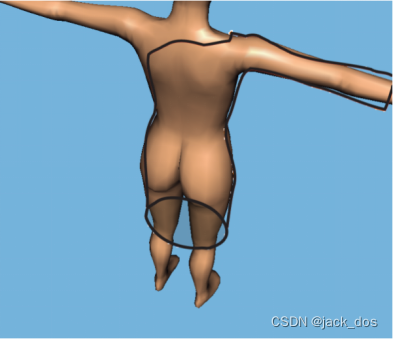
(b) The back part is added to the front one by drawing the lower-back boundary of the dress.
通过画裙子的下背部边界,将后面的部分添加到前面的部分。
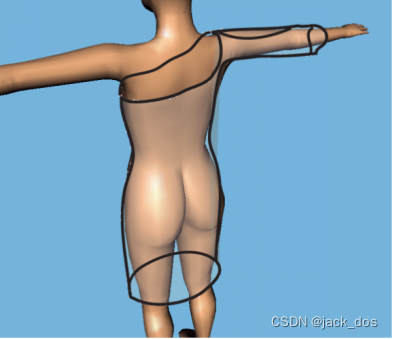
(c) The second region constructed needs to be cut in two places for the general outline of the dress to be completed .
第二部分需要切割成两处,以完成裙子的大体轮廓。
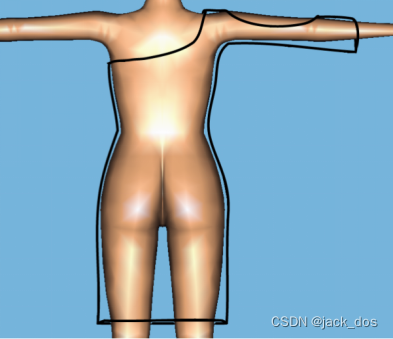
(d) One last stroke on the sleeve allows the creation of a stylish hole in the garment.
袖子上的最后一笔可以在衣服上开一个时髦的洞。
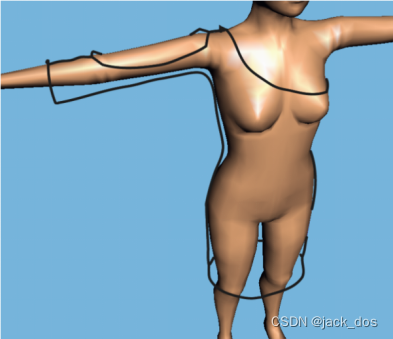
(e) The network of outer boundaries that depict the general shape of the garment.
描绘衣服的一般形状的外部边界网络。
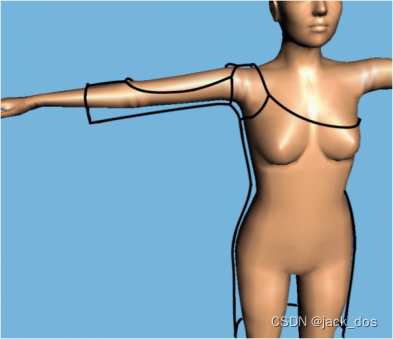
(f) sketches added to partition non-convex regions.
增加了划分非凸区域的示意图。
Fig. 4. Sketching the network of boundaries representing the dress.
图4所示。勾勒出代表服装的边界网络。
当
![]()
且

For every negative distance with index i, the sides that contribute to the summation with the negative coefficients are identified by the indices: 对于每一个与指标i的负距离,与负系数求和的边由指标确定:

These lengths are marked as large lengths. 这些长度被标记为较大长度。
For every large length li , regions i and i + 1 are marked as distorted if neither li−1 nor li+1 is large or both li−1 and li+1 are large.
对于每一个较大长度li,如果li−1和li+1都不很大,或者li−1和li+1都很大,则i和i+1区域被标记为扭曲。
Otherwise, only region li+1 is marked as distorted if li+1 is large and li−1 is not.
否则,只有当li+1较大而li - 1不较大时,li+1区域才被标记为扭曲区域。
To recalculate the distances, for every negative distance, di , if length i is large, set it to 2, otherwise set it to 1.
为了重新计算距离,对于每一个负距离di,如果长度i很大,设为2,否则设为1。
Then, while there are still distances being modified or set, for each distance where length i is not large:
然后,当仍然有距离被修改或设置时,对于长度i不太大的每个距离:
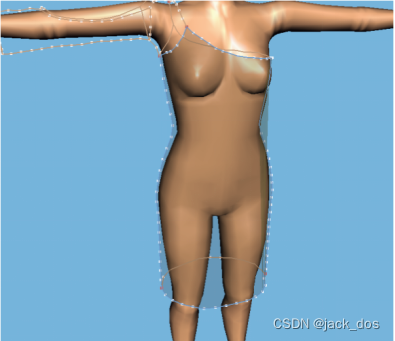
(a) For each closed region, corners are identified by the system and verified by the user.
每个封闭区域的角落由系统识别并由用户验证。

(b) Filled with a quad mesh (described in the next section).
填充四面网格(在下一节中描述)。
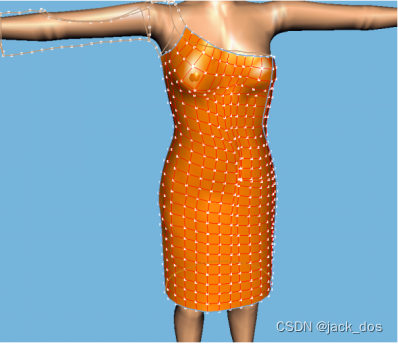
(c) Resolve body-garment interpenetration.
解决服装相互渗透问题。
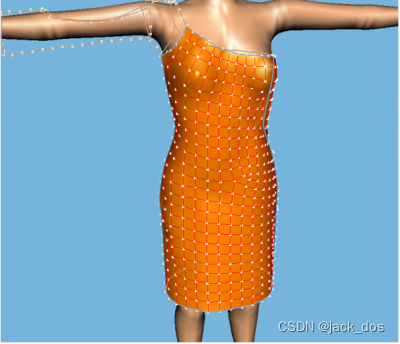
(d) Mesh beautified using either an optimization technique or a particle system.
使用优化技术或粒子系统美化网格。
Fig. 5. Quad mesh generation. 图5所示.四边形网格的生成
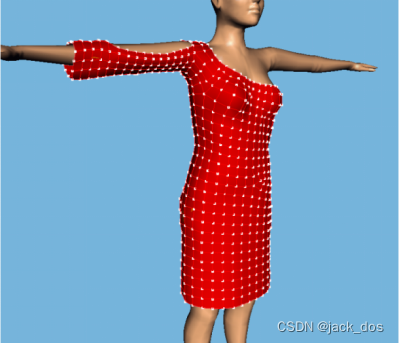
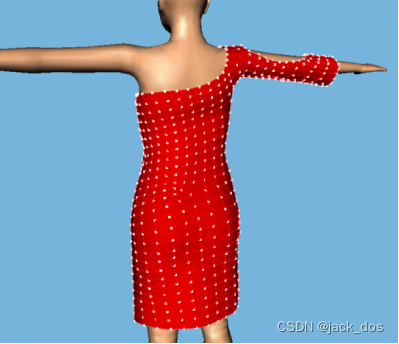
(a) The front polygonal mesh. (b) The back polygonal mesh.
前多边形网格。 背多边形网格。

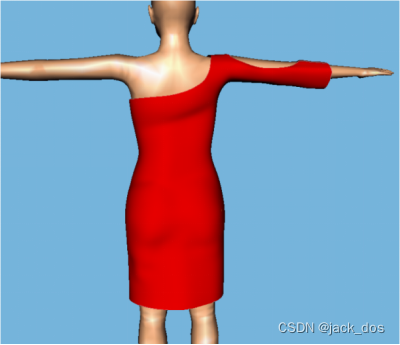
(c) The Catmull-Clark surface. (d) The Catmull-Clark surface.
卡特穆尔-克拉克面。 卡特穆尔-克拉克面。
Fig. 6. The resultant dress after quadrangulating all closed regions.
图6所示。将所有封闭区域四边形化后得到的服装。
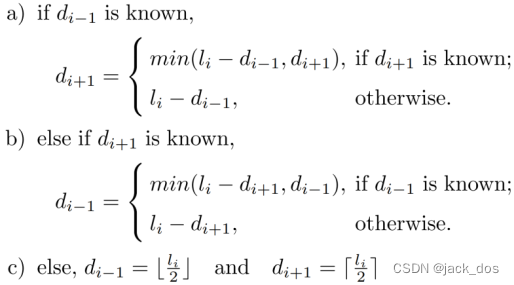
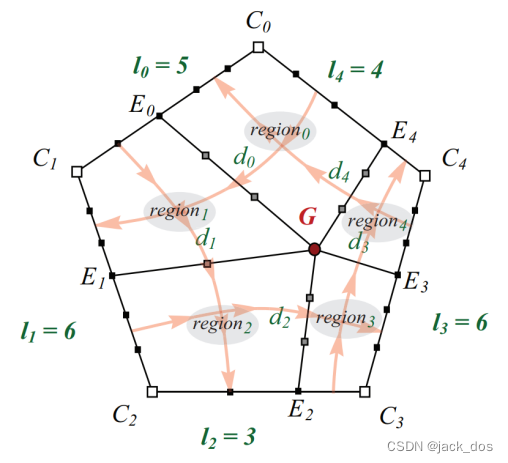
Fig. 7. The flow of lines (in light red) infer the partitioning to rectangular subregions. Regions i and i+1 are associated with side i.
图7所示。线条的流动(淡红色)推断出划分为矩形子区域。区域i和i+1与边i相关。
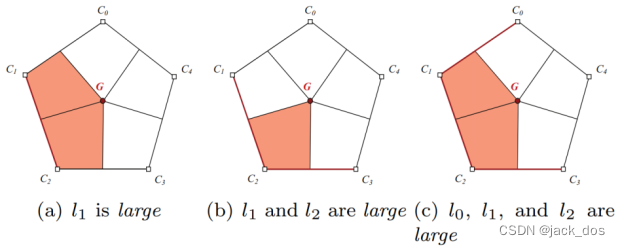
Fig. 8. Distorted regions (light red) are identified according to large lengths (dark red).
图8所示。根据较大的长度(暗红色)来识别扭曲区域(淡红色)。

(a) a 3–sided region where only one length is large只有一个长度较大的三面区域

(b) a 5–sided region where two adjacent lengths are large两个相邻长度较大的五边区域

(c) a 5–sided region where three adjacent lengths are large三个相邻长度较大的五边区域
Fig. 9. Examples of regions filled by quad meshes of non–minimal distortion. Form left to right: the region defined by boundary polylines, distorted subregions (light red) and large lengths (dark red), and the resulting quad mesh.
图9所示。由非最小失真的四元网格填充的区域的例子。从左到右:由边界折线、变形的子区域(淡红色)和较大的长度(暗红色)定义的区域,以及由此产生的四边形网格。
3.2.2. Permanence Patches永久的补丁
The generalized approach that is proposed in this paper introduces slight complications to this boundary–interior polyline associations.
本文提出的广义方法对这种边-内折线关联引入了一些复杂性。
Using strictly discrete Coons may result in geometrically distorted meshes.使用严格离散的库子可能导致几何畸变网格
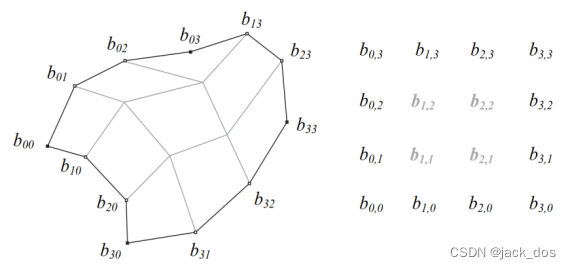
Fig. 10. A configuration where m = n = 3. The gray colored vertices are the unknown interior vertices.
图10所示。一个构型,其中m = n = 3。灰色的顶点是未知的内部顶点。
According to the permanence principal [7], the relation between every interior vertex and its immediate neighbors:
根据永久性原理[7],每个内顶点与其近邻之间的关系为:
![]()
A neater way of writing this is using a mask as shown in Eq. 1. 更简洁的写法是使用如公式1所示的掩码。

The discrete Coons patch has m + 1 × n + 1 vertices; of these, m−1 × n−1 are unknown.
离散孔斯曲面片有m + 1×n + 1个顶点;其中m−1×n−1是未知的。
Eq. 1 gives one equation for each unknown.
方程1给出了每一个未知数的方程。
Thus we may find the discrete Coons patch as the solution of a linear system with m − 1 × n − 1 equations in as many unknowns.
因此,我们可以发现离散孔斯曲面片是一个线性方程组的解,该方程组有m - 1×n - 1个未知数。
So far, solving m − 1 × n − 1 equations has given what was already available with much less computation in the discrete Coons.
到目前为止,解m – 1×n - 1的方程所得到的结果,在离散孔斯曲面片中计算量要少得多。
However, the mask in Eq. 1 gives a new insight towards relating vertices to their neighbors and thus establishing a global linear system that describes the patch.
然而,公式1中的掩码提供了一个新的视角,使顶点与它们的邻居相关联,从而建立一个全局的线性系统来描述修补程序。
By preserving relative values, the mask may be written as given by Eq. 2. As such, different choices for α and β could be used.
通过保留相对值,掩模可以写成公式2所示。因此,可以使用不同的选择α和β。
Note that we always need 4α + 4β = 1 in order for 2 to utilize barycentric (or affine) combinations.
注意,我们总是需要4α+β= 1为了2利用质心(或仿射)的组合。
It is evident that these patches are defined in regular topology where the quad mesh is a grid of 4–valent vertices.
很明显,这些补丁是在规则的拓扑结构中定义的,其中四价网格是一个4价顶点网格。
Thus, for us to use permanence patches in arbitrary topology we need to generalize the mask to facilitate adding dislocations and vertices on facets to the system of linear equations.
因此,为了在任意拓扑结构中使用永久性补丁,我们需要推广掩模以方便将位错和顶点添加到线性方程组中。
The approach is rather simple. The condition is to satisfy the following equation as we calculate αn for an n–valent vertex:
方法相当简单。当我们为一个n阶顶点计算αn时,条件是满足下列等式:
![]()
where α4 is the value of the mask for a 4–valent vertex [7].Thus:当α4为一个四阶顶点的掩码值时,那么:

As for the vertex which belongs to a non–quadrilateral facet, its diagonal opposite vertex on this facet is the centroid of this facet.
对于属于非四边形平面的顶点,其在该平面上的对角相对顶点为该平面的质心。
After defining the mask of every vertex, a linear equation is added to the system. 定义了每个顶点的掩码后,在系统中加入一个线性方程。
We base this generalization on the general way Farin et al. [7] followed to set up the permanence patches. 我们根据Farin et al.[7]建立永久性补丁的一般方法来建立这种泛化。
The value of α, and consequently β, is a user choice. 有了α的值,β也就计算得出了
The feasible range of α values is between 0.0 and −0.25 (see Fig 11). α值的可行范围介于0.0−0.25(见图11)。
Other values may produce noisy meshes. 其他值可能产生噪声网格。
The maximal value (0.0) yields geometries that tend to look flat, a feature which diminishes as α decreases towards −0.25.
最大的值(0.0)收益率几何图形,往往看起来平,这一特性会随着α−0.25减少。

Fig. 11. A three sided region filled by a permanence patch with values −0.25 (middle) and 0.0 (right) for α.
图11所示。三面区域根据α值有不同的填充效果 −0.25(中)0.0 (右)。
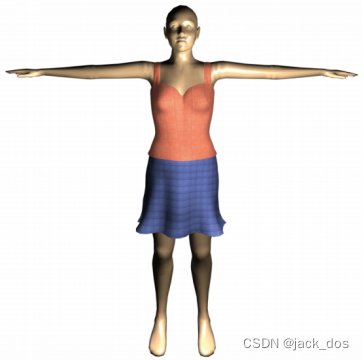
Fig. 12. Textured cloth designed using a quad mesh generation scheme.
图12所示。纹理布设计使用四网格生成方案。
4. Mechanical Garment Simulation机械服装仿真
The first task of mechanical simulation is the construction of a suitable geometric representation of the garment object, fitting the requirement of the mechanical simulator.
机械仿真的首要任务是构造一个合适的服装对象的几何表示,以满足机械仿真的要求。
The mechanical simulator uses triangle elements, which is suitable to a precise computation of weft, warp and shear strains and stresses of the cloth material [Volino and Magnenat-Thalmann, 2009].
该机械模拟器采用三角形单元,适用于布料材料的纬、经、剪应变和应力的精确计算[Volino and Magnenat-Thalmann, 2009]。
Thanks to a lumped-mass approximation, the model can be formulated as interaction forces relating particles belonging to the same triangle, depending on their relative position.
由于采用了集总质量近似,该模型可以根据粒子的相对位置,将其表述为属于同一三角形的粒子之间的相互作用力。
It is therefore essential for the simulation mesh to offer suitable geometric properties for efficient mechanical simulation (regularity of the mesh, no degenerate (flat) mesh elements...).
因此,为高效的力学模拟提供合适的几何特性(网格的规整性、不退化(平面)网格单元……)是仿真网格的关键。
Hence, rather than using the generated patch mesh directly, we perform an adaptive rediscretization of the mesh into triangle elements according to size limits and the Delaunay criteria.
因此,我们不是直接使用生成的补片网格,而是根据大小限制和Delaunay标准将网格自适应地重新离散为三角形元素。
To this mesh is then associated a set of ”material coordinates” representing the metric (rest shape) of the cloth elements.
然后将一组表示布元素的度规(静止形状)的“材料坐标”与此网格相关联
Assuming the initial design roughly represents the tensile cloth deformation at rest, these material coordinates are extracted from the initial shape of the element mapped on its patch.
假设初始设计大致代表了织物在静止状态下的拉伸变形,这些材料坐标是从元素在其patch上的初始形状中提取出来的。
Our mechanical simulation animates the garment according to the following factors:
我们的机械模拟动画服装根据以下因素:
(i) The internal elasticity of the cloth material, represented by weft, warp and shear strain-stress curves. 布料内部弹性,以纬、经、剪应变-应力曲线表示。
(ii) Gravity, which pulls the garment downward. 重力,它将衣服向下拉。
(iii) Collision forces, which prevent the penetration of the garment inside the surface representing the body. 碰撞力,防止服装在代表人体的表面内渗透。
Cloth materials are properly represented through nonlinear strain-stress curves extracted from tensile tests performed on actual materials, or extracted from standard fabric characterization procedures [13]. 从实际材料的拉伸试验中提取的非线性应变-应力曲线,或从标准的织物表征程序[13]中提取的织物材料,可以很好地表示织物材料。
Collisions are detected using a Bounding Volume Hierarchy algorithm, which detects proximities between cloth vertices and body polygons.
碰撞检测使用包围体层次算法,该算法检测布顶点和物体多边形之间的接近度。
These collisions are integrated into the simulation system as geometrical constraints. 这些碰撞作为几何约束被集成到仿真系统中。
5. Conclusion and Future Work结论与未来工作
Designing garments from sketched outlines in a 3D environment alleviates some of the difficulties involved in cloth modeling.
在三维环境中,通过草图设计服装可以减少服装建模的一些困难。
Our approach utilizes the enhanced version of a quad meshing algorithm proposed in [1] to construct pieces of cloth from the outlines drawn by the user.
我们的方法利用在[1]中提出的四元网格算法的增强版本,根据用户绘制的轮廓构造布料。
For more control over the geometry of the resulting mesh, we propose a generalized version of permanence patches and introduce weights to the boundary vertices to compute interior vertex positions.
为了更好地控制生成网格的几何形状,我们提出了一种永久性修补的广义版本,并在边界顶点上引入权值来计算内部顶点位置。
Garment animation also offers interesting perspectives of the designer, who should be able to assess the dynamic behavior, the fitting and the garment style according to body poses and motion.
服装动画也为设计师提供了有趣的视角,设计师应该能够根据人体的姿态和动作来评估动态行为、试穿和服装风格。
An important future topic to be addressed is the extraction of high-accuracy garment patterns from the obtained 3D garment surface.
未来的一个重要课题是如何从三维服装表面提取高精度的服装图案。
Essentially based on surface unwrapping and dart insertion techniques, these should be able to produce 2D garment patterns which follow basic design rules currently used in the garment industry.
从本质上讲,基于表面展开和省道插入技术,这些技术应该能够生产出符合当前服装行业使用的基本设计规则的二维服装图案。
References参考文献
[1] Nasri A., Sabin M., and Yasseen Z. Filling n-sided regions by quad meshes for subdivision surfaces. Computer Graphics Forum, 28:1644–1658(15), September 2009.
[2] A. A. Ball and D. J. T. Storry. Design of an n-sided surface patch from hermite boundary data. Comput. Aided Geom. Design, 6:111–120, 1989.
[3] R. J. Cass, S. E. Benzley, R. J. Meyers, and T. D. Blacker. Generalized 3-d paving: An automated quadrilateral surface mesh generation algorithm. International Journal for Numerical Methods in Engineering, 39(9):1475–1489, 1996.
[4] P. Charrot and J. A. Gregory. A pentagonal surface patch for computer aided geometric design. Comput. Aided Geom. Design, 1:87–94, 1984.
[5] Hong Chen, Zi Jian Xu, Zi Qiang Liu, and Song Chun Zhu. Composite templates for cloth modeling and sketching. In CVPR ’06: Proceedings of the 2006 IEEE Computer Society Conference on Computer Vision and Pattern Recognition, pages 943–950, Washington, DC, USA, 2006. IEEE Computer Society.
[6] Charlie C.L.Wang, Yu Wang, and Matthew M.F.Yuen. Feature based 3d garment design through 2d sketches. Computer-Aided Design, 35:659–672, June 2003.
[7] Gerald Farin and Dianne Hansford. Discrete coons patches. Comput. Aided Geom. Des., 16(7):691–700, 1999.
[8] Feng Han and Song-Chun Zhu. Cloth representation by shape from shading with shading primitives. In CVPR ’05: Proceedings of the 2005 IEEE Computer Society Conference on Computer Vision and Pattern Recognition (CVPR’05) - Volume 1, pages 1203–1210, Washington, DC, USA, 2005. IEEE Computer Society.
[9] Wei-Chung Hwang and Jung-Hong Chuang. N-sided hole filling and vertex blending using subdivision surfaces. J. Inf. Sci. Eng., 19(5):857–879, 2003.
[10] B. Joe. Quadrilateral mesh generation in polygonal regions. Computer-Aided Design, 27(3):209–222, 1995.
[11] Adi Levin. Filling n-sided holes by combined subdivision schemes. In Paul Sablonniere Pierre-Jean Laurent and Larry L. Schumaker, editors, Curve and Surface Design: Saint-Malo, pages 221–228. Vanderbilt University Press, Nashville, TN, 1999.
[12] T. S. Li, C. G. Armstrong, and R. M. McKeag. Quad mesh generation for k-sided faces and hex mesh generation for trivalent polyhedra. Finite Elem. Anal. Des., 26(4):279–301, 1997.
[13] C. Luible and N. Magnenat-Thalmann. The simulation of cloth using accurate physical parameters. In CGIM 2008, Insbruck, Austria, 2008.
[14] Satoshi Nagakura, So Noguchi, Kazufumi Kaneda, Hideo Yamashita, and Vlatko Cingoski. Automatic quadrilateral mesh generation for fem using dynamic bubble system. IEEE TRANSACTIONS ON MAGNETICS, 37(5):3522–3525, 2001.
[15] Changhyup Park, Jae-Seung Noh, Il-Sik Jang, and Joe M. Kang. A new automated scheme of quadrilateral mesh generation for randomly distributed line constraints. Comput. Aided Des., 39(4):258–267, 2007.
[16] S. Schaefer, J. Warren, and D. Zorin. Lofting curve networks using subdivision surfaces, pages 103–114. ACM Press, New York, NY, USA, 2004.
[17] K. Shimada and J. Liao. Quadrilateral meshing with directionality control through the packing of square cells, 1998.
[18] Emmanuel Turquin, Jamie Wither, Laurence Boissieux, MariePaule Cani, and John F. Hughes. A sketch-based interface for clothing virtual characters. IEEE Comput. Graph. Appl., 27(1):72–81, 2007.
[19] T. Varady and A. P. Rockwood. Geometric construction for setback vertex blends. Comput. Aided Design, 29:413–425, 1997.
[20] P. Volino, N. Magnenat-Thalmann, and F. Faure. A simple approach to nonlinear tensile stiffness for accurate cloth simulation. ACM Transactions on Graphics, pages 105–116, August 2009.
[21] David White and Paul Kinney. Redesign of the paving algorithm: Robustness enhancements through element by element meshing. In Proc. 6 th Int. Meshing Roundtable, pages 323–335.
[22] Zahraa Yasseen, Ahmad Nasri, Pascal Volino, and Nadia Magnenat-Thalmann. Towards sketched-based garment design and animation. Singapore, June 2010. Short paper presented at Computer Graphics International Conference.


